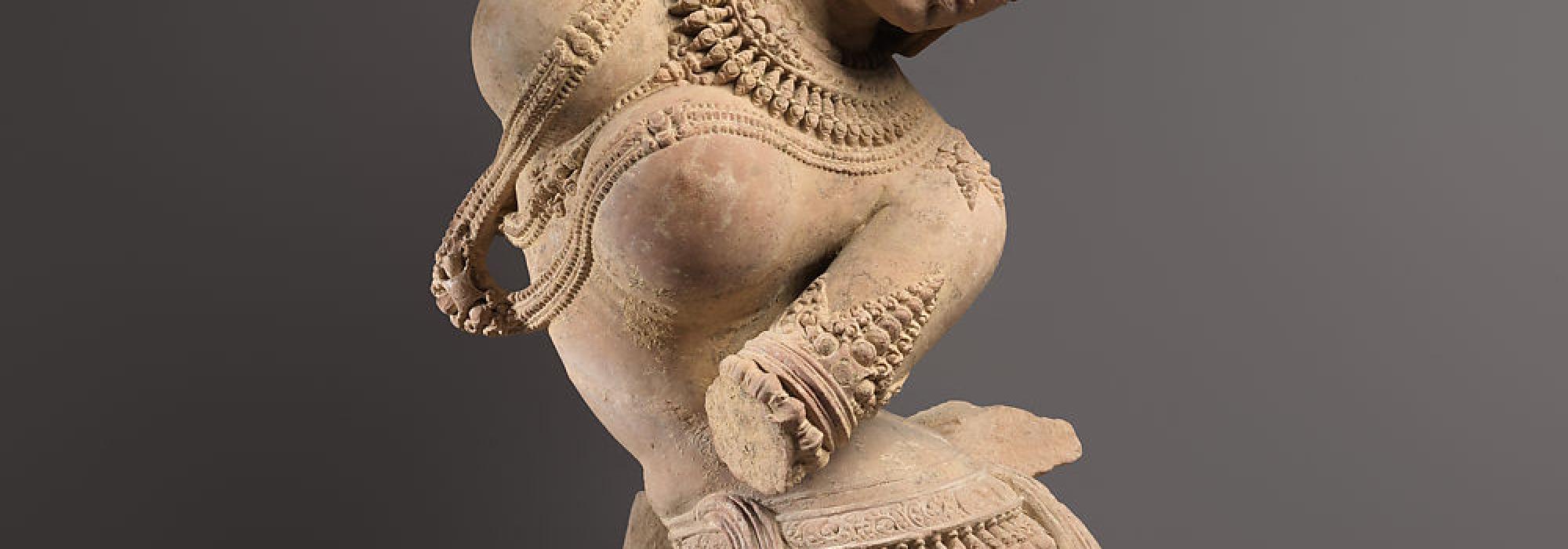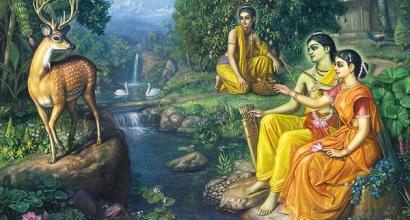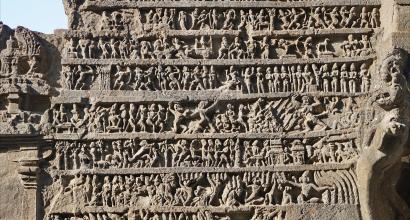There are many dimensions that research in classical Indian dance can explore and many paths it can choose to tread. This is, in fact, true from a global perspective as well. But we shall limit the current discussion to the dance forms of India that have traditionally come down to us.
Movement is fundamental to all forms of dance around the world and it involves the major and minor parts of the body.[1] Owing to the variegated movements, different forms of dance have taken birth in the first place. For all dance-related research, it would be good if movement vocabulary can be held as the focal point. Such dance-related research is important at the level of form but research in the realm of the content is something different altogether. The content and substance of all art is the same – Rasa. Ānanda is the experience that transcends all other ephemeral experiences and stands as the most sublime one. It is untainted by the constraints of time and space. All forms of art turn towards philosophy when their content is taken up for discussion. A philosophical point of view is inevitable for the analysis of the content of all arts. Everything else is related to research at the level of structure.
The structure of dance lies in its movement vocabulary. Music, on the other hand, flows with time; therefore, śruti and laya together characterize the structure of a musical presentation. In literature, sound and sense (word and meaning - vāk and artha ) are the focal points for all research. In painting, lines and colours define the form; in sculpture, the length, width, and depth as well as the play of light and shadow for delineating the silhouette constitute the elements of the structure. In this manner, though the elements of the form are different, all arts find their common denominator in their essence – Rasa. When dancers start contemplating upon the content, they must consciously and critically examine their own experiences.
People have different kinds of experiences, with varied levels of intensity at different points in time. We must establish a common base for all this and in order to do so, we must inevitably examine these variegated experiences from the perspective of philosophy. Vedānta has achieved this very well. Western schools of psychology also have contributed to some extent in this direction. Most streams of Indian philosophy deem psychology as an integral part of philosophy and thus, analysis at the mental and emotional plane is not new to Indian thought. Modern psychology, however, does not go beyond a relative perception of different emotional states and at times this can lead to inconclusiveness at various levels. Moreover, modern psychology does not provide us with a universal perspective of matter. Indian philosophy goes beyond the ephemeral and subjective nature of psychology, giving a universal and objective perspective of things. Those desirous of conducting research in dance should never forget the following: rather than becoming someone or something else, one must find one’s own true self. This is essential and must be pursued seriously by all artistes. Every artiste must have at least an overview of the kinds of discussion that have taken place in Indian philosophy.
While this is the essence of research at the level of substance, it is also important to take a look at a few of its other dimensions. A little contemplation makes it evident that there is much research that needs to be pursued in connection with Rasa. It is true that a thousand thoughts about Rasa have flowed down the stream of time. Researchers must record all the scholarly work that has taken place so far in connection with Rasa and take it forward by adding their own insights and observations. There are several peripheral aspects that need to be explored in the areas of aesthetics and the theory of Rasa. There is also an urgent need to present objective rebuttals to people who—with ulterior motives—have misrepresented and misinterpreted Indian aesthetics. There are many questions related to the Rasa theory that dance researchers can explore. Here are just a few.
- How are we supposed to comprehend rasābhāsa (illusion of rasa)?
- What is the role played by rasas such as bhayānaka, bībhatsa, and raudra? How do they kindle joy in the connoisseur? Can they be staged in a dance production? If so, how should it be done?[2]
- Is there a place for hāsya (comedy) in nṛtya? If there is one, what are the kinds of hāsya that can be brought out?
- How do the different vyabhicāri-bhāvas add to the nourishment of Rasa? What is the role played by each of them?
- If different vyabhicāri-bhāvas can get elevated to the level of Rasa, what factors contribute to their appeal? (This, in fact, has been the view of Bhoja and other aestheticians. The researcher will need to examine in detail the consequences of such assertions).
- In the view of Ānanda-vardhana, rasa, bhāva, bhāvābhāsa, rasābhāsa, bhāvodaya, bhāva-śānti, and bhava-śabalatā – all these add to the relish of a form of art. In this context, we must understand the exact meaning of the terms ‘bhāvābhāsa’ and ‘rasābhāsa’. It is also important to figure out how ‘bhāvodaya’ and ‘bhāva-śānti’ arise. What constitutes bhava-śabalatā also needs to be analysed.
- To what extent should nṛtya be stylized? Wouldn’t over-stylization mean that we are forcing the connoisseur to learn and understand a codified language that is all new to him?
How should one strike a balance between the four modes of abhinaya to evoke Rasa? >
These and many other questions need to be pondered upon. The researcher will need to collect data, go through the śāstras with all thoroughness, contemplate upon his own experience and then document his thoughts on the subject.
Going back to the research related to the structure of dance, there is a lot that can be done in the arena of movements. There are several directions research related to āṅgika can take:
- There is a need to rethink and analyse the different kinds of movements of the aṅga, pratyaṅga, and upāṅga that are possible and are practical to be adopted in classical dance. The Nāṭyaśāstra describes several exercises for aṅgas and upāṅgas but we have to see their relevance today. Has movement vocabulary been enriched from the times of the Nāṭyaśāstra, have some movements gone out of vogue or don’t suit the current day’s circumstances? – this question will need to be examined.
- What is the nature of the movements performed by actors on AXN—or any other television channel featuring adventures—that can thrill the audience? The actor performs a movement within two minutes and successfully captures the attention of his viewers. Do his movements fall under any category defined in the Nāṭyaśāstra? Are there reflections of the aṅga and upāṅga movements in those episodes as well? If they do fall under one of those categories, which one are they closest to? If they don’t, at what point do they diverge from the Nāṭyaśāstra? If they appear to be movements that are altogether novel, how do we give them a definition? We will also need to analyse the proportions in which the elements of gimmick and elements of beauty are mixed to bring out such an acrobatic feat.
There are some acts that amaze us and take our breath away; when we watch such a performance over and over again, it certainly loses its appeal with multiple viewings. This is not the case with beauty. We may relish a thing of beauty however much we desire and it retains its flavour – it remains a joy for ever; each experience with the art reveals layers and layers of beauty, enriching us each time. Among things that cause amazement, it is only the acrobatic technique that captures the audience. But it is dry and loses its charm with time. There is not much scope for pure enjoyment in such performances. It is necessary for us to examine these kinds of movements with an objective mind and free from personal agenda. The Nāṭyaśāstra can provide us with a solid framework for all such analysis.
To be continued...
[1] These are variously classified as ‘aṅga,’ pratyaṅga,’ and ‘upāṅga’ in Indian treatises on performing arts.
[2] The present author has written in detail about this in his Sanskrit essay ‘Rasābhāso nirasyate’ (See pp. 120–139 of his anthology Vāgarthavismayāsvādaḥ. Bengaluru: Prekshaa Pratishtana, 2018).














































